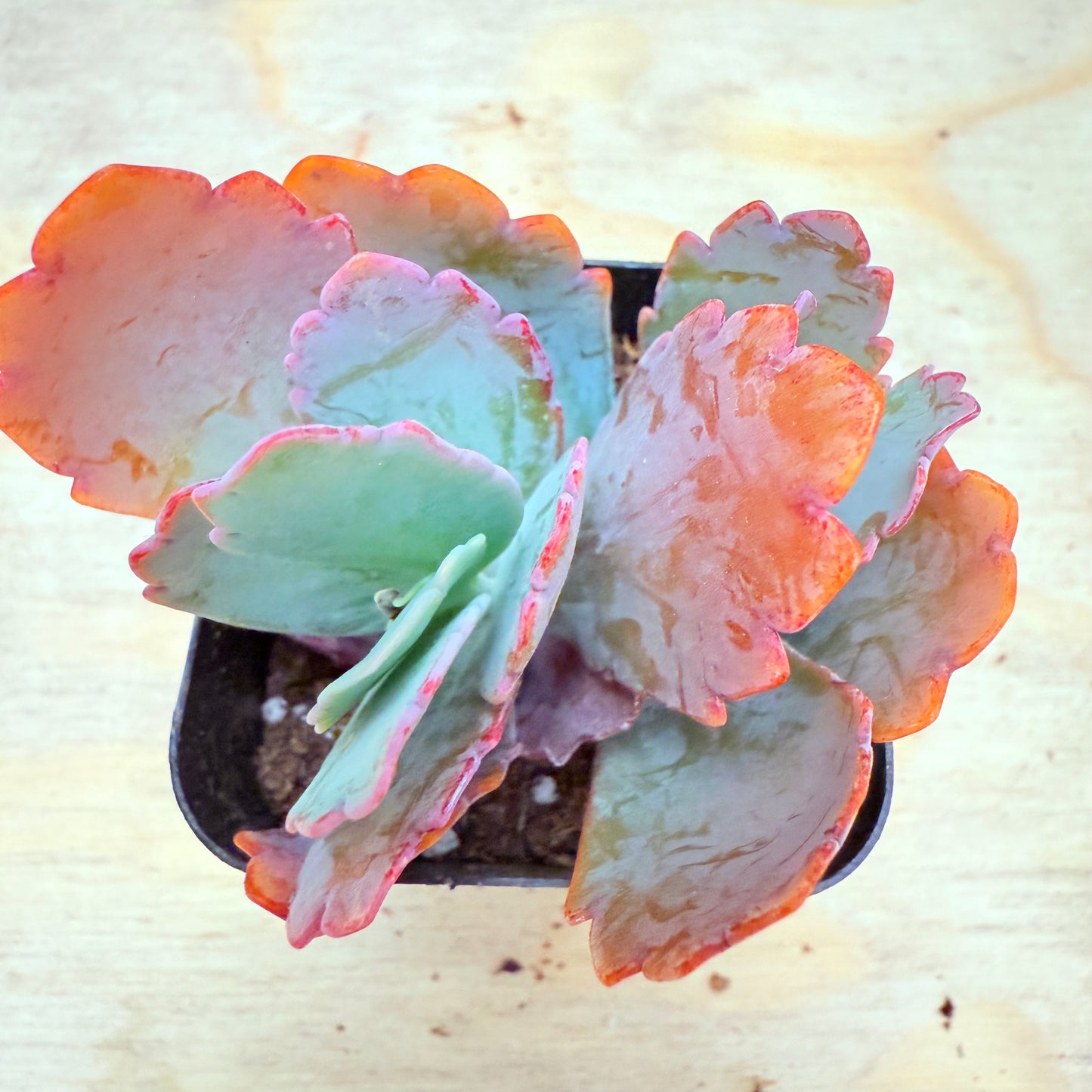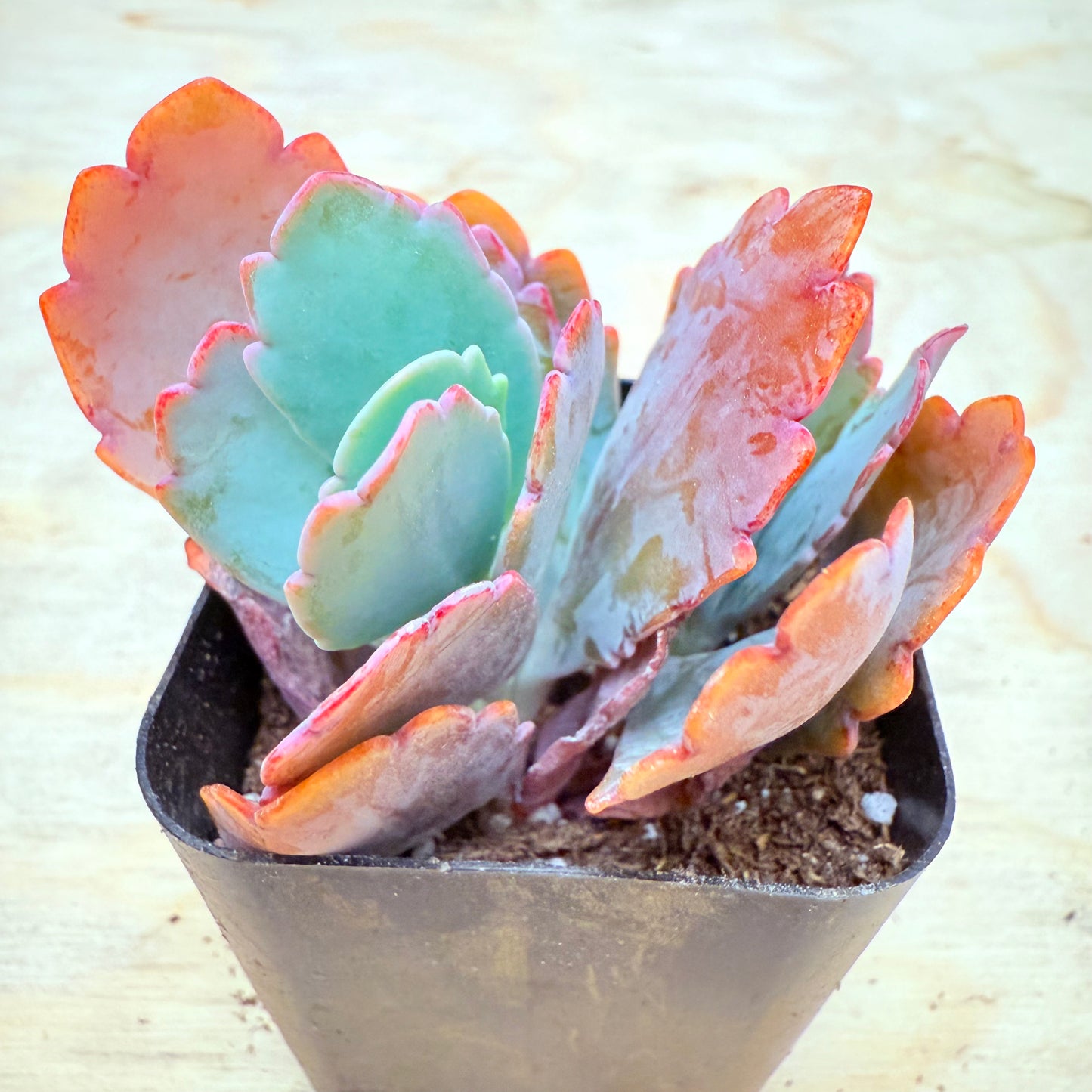Seah
Kalanchoe fedtschenkoi - Lavender Scallops
Kalanchoe fedtschenkoi - Lavender Scallops
In stock
Couldn't load pickup availability
Morphological Characteristics
Kalanchoe fedtschenkoi, commonly known as Lavender Scallops, is a fast-growing, mat-forming succulent native to Madagascar, belonging to the Crassulaceae family. It is widely cultivated for its beautiful scalloped leaf edges, soft coloring, and spreading growth habit.
The plant features oval to oblong leaves, typically 4–6 cm (1.5–2.5 inches) long, arranged alternately on trailing stems. Leaves are bluish-green to lavender-gray, often with rosy or purplish margins especially when grown in full sun. The edges are gently undulated and sometimes appear notched or scalloped. Under stress (cold or drought), the whole plant may flush with rosy-purple tones.
Mature plants grow up to 30–45 cm (12–18 inches) tall and can spread 60 cm (24 inches) or more horizontally. In summer or late spring, they produce upright stalks bearing urn-shaped, coral to salmon-pink flowers that dangle attractively in clusters.
Growth Habits
Lavender Scallops is a prolific ground-covering succulent with spreading stems that root easily at the nodes when they touch the soil. It is often used for edging, container gardens, hanging baskets, or as a trailing accent in arrangements. In frost-free regions, it naturalizes easily and can become invasive if not managed.
Maintenance Points
-
Lighting: Thrives in full sun to bright filtered light. Coloration becomes more intense with more sunlight exposure.
-
Watering: Water thoroughly when soil is dry. Avoid overwatering, as it is sensitive to rot. Water less in winter.
-
Soil: Needs fast-draining succulent or cactus soil. Amend with perlite or coarse sand if necessary.
-
Temperature: Ideal temperatures are 18–29°C (65–85°F). Protect from frost (minimum safe temperature around 5°C / 41°F).
-
Fertilization: Fertilize lightly once a month in spring and summer with balanced succulent fertilizer.
-
Potting: Use shallow, wide pots to accommodate spreading stems. Ensure drainage holes are present.
-
Humidity: Prefers dry air. Avoid high humidity which may promote fungal issues.
Reproduction Method
Stem Cuttings:
-
Take cuttings of 8–10 cm (3–4 inches).
-
Let cuttings dry and callus for 1–2 days.
-
Plant in dry, well-draining soil and water lightly after roots develop.
Leaf Cuttings:
-
Whole leaves can be used. Allow to dry for 1–2 days before placing on soil surface.
-
Mist lightly until small roots and pups form.
Offsets:
-
Easily spreads through natural offsets and rooting stems. Separate and replant where desired.
Additional Tips
-
Pest Control: Monitor for aphids, mealybugs, and scale insects. Treat early with neem oil or insecticidal soap.
-
Disease Prevention: Avoid wetting the foliage and ensure good air circulation. Susceptible to fungal rot if overwatered.
-
Pruning: Trim back long or leggy stems to shape and encourage denser growth. Deadhead faded flowers.
-
Display: Excellent for window boxes, rock gardens, and hanging baskets. Adds soft pastel tones and cascading texture.
-
Safety Note: Mildly toxic if ingested—keep away from pets and small children.




